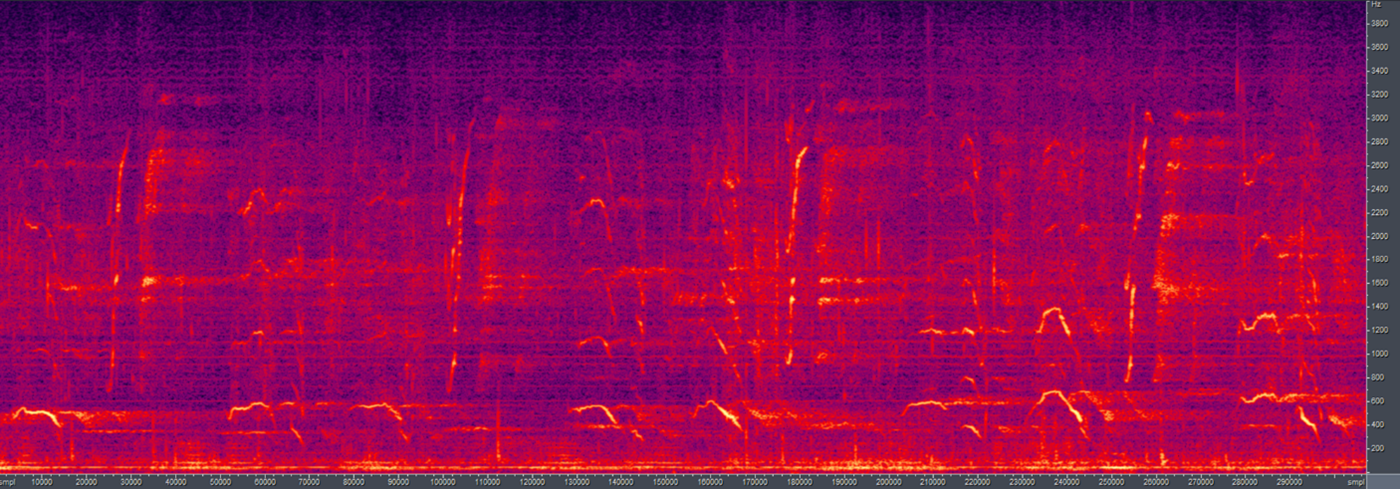
Context
The reliable transmission and reception of information using underwater acoustics faces many challenges which ultimately stem from the complex nature of acoustic propagation within a bounded medium. There is a defence need for the reliable transmission of information over long ranges (10NM-250NM) to provide command and control (C2) of new and emerging autonomous sensor and vehicle technologies. Such ranges are only achievable using low frequency acoustics (typically<5kHz). Given this frequency range falls within large aperture sonar array sensor bands, any manmade transmissions observed within this band are generally easily detectable and classifiable by such sonar systems. A potential means to reduce transmission intercept/classification vulnerability is to either disguise and/or hide information bearing signal transmissions, within the highly variable and irregular background noise scenes afforded by marine mammal vocalisations, such as the scene depicted below taken from the Watkins Marine Mammal Sound Database.

Challenge Goals
Basic
Your basic challenge will be to select a wav file from the Watkins data base, review its time-frequency structure, and design a basic information bearing signal, which can be introduced back into the scene in a manner such that it becomes indistinguishable from the surrounding signal structure, from aural and time-frequency visualisation, like the above.
You will then be asked to demonstrate the ability to uniquely detect the re-introduced signal reliably against the background noise scene. Consideration should be given to the role of the environment in distorting the signal and the effectiveness of the detection strategy against such distortions which will notably include multipath and Doppler.
Intermediate
Conventional narrowband and broadband passive sonar systems are able to detect signals based on angle of arrival (AOA) discrimination, and this presents a detection risk to any re-introduced signals when done so at high signal-to-background levels, as the receiver can spatially discriminate between the man-made transmission and biological noise.
In the intermediate challenge you will be asked to demonstrate the ability to detect the known information bearing signal, at low signal-to-background, such that the signal is less obvious against the background scene, and ideally indistinguishable from it, to reduce counter detection risk.
Stretch
The stretch goal will involve demonstrating initial detection of the chosen signal, and subsequent detection (demodulation) of subsequent information bearing signals, at low, ideally negative, SNR, where information may be imparted through arbitrary means, which may include signal position, signal shape (time-frequency), signal amplitude-phase characteristics and/or combinations thereof.
Pre-requisites
You will need to bring a laptop with appropriate computing tools e.g. Python / MATLAB etc, as well as any relevant libraries/toolboxes e.g. NumPy, Matplotlib, PyTorch, TensorFlow.
Waveform editing and visualisation tools, such as Goldwave will be helpful to facilitate signal visualisation and manipulation and provide means to aurally scrutinise generated signals.
Background Material
Candidates may wish to familiarise themselves with the Watkins Marine Mammal Sound Database in advance of the workshop, to gain insight and understanding into the diversity of marine mammal vocalisations, and gain ideas on potential signals and signal structures suited to meeting the task objectives.